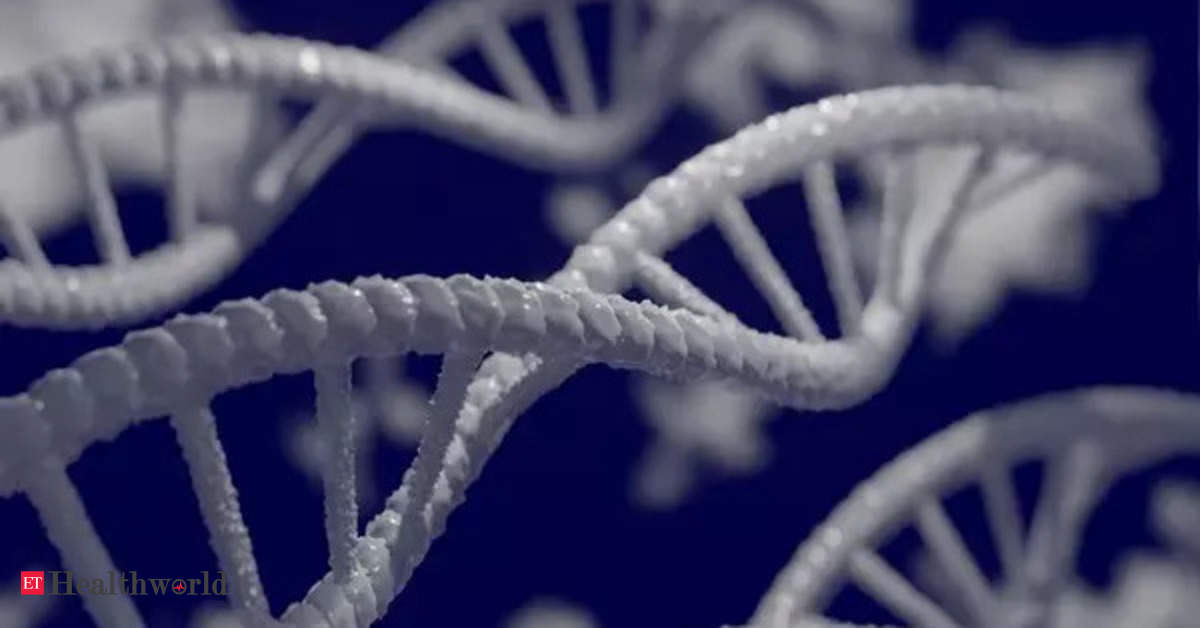DNA repair discovery could improve biotechnology: Research, Health News, ET HealthWorld

Exclusive
DNA repair discovery could improve biotechnology: Research
A large protein kinase called DNA-PK starts the DNA repair process; in their new report, two distinct DNA-PK protein complexes are characterized, each of which has a specific role in DNA repair that cannot be assumed by the other.
ANI
March 03, 2023, 18:30 IST
Washington [US]: A team of researchers from Michigan State University's College of Veterinary Medicine has made a discovery that may have implications for therapeutic gene editing strategies, cancer diagnostics and therapies and other advancements in biotechnology.
Kathy Meek, a professor in the College of Veterinary Medicine, and collaborators at Cambridge University and the National Institutes of Health have uncovered a previously unknown aspect of how DNA double-stranded breaks are repaired.
A large protein kinase called DNA-PK starts the DNA repair process; in their new report, two distinct DNA-PK protein complexes are characterized, each of which has a specific role in DNA repair that cannot be assumed by the other.
"It still gives me chills," says Meek. "I don't think anyone would have predicted this."
Meek's findings are published in Molecular Cell, a high-impact journal that covers core cellular processes like DNA repair.
How DNA double-stranded breaks are repaired
DNA, the blueprint of life, is shaped like a helix; however, DNA is surprisingly easy to damage. Ultraviolet light, for example, and many cancer therapies including ionizing radiation and other specific drugs can all cause damage to DNA. Sometimes, only one of the two strands break. Because the DNA is still held together by the second strand, cells can repair the DNA fairly easily -- the cells just copy the information from the second strand.
It is more difficult for cells to repair DNA damage when both strands are broken. Information in the form of nucleotides can be lost and must be added back in before the DNA ends are rejoined. If a cell has multiple DNA double-stranded breaks, the DNA ends can be joined with the wrong partner. This type of mistake is often associated with many types of cancers.
Double-stranded breaks also can be more difficult to repair if DNA-damaging agents cause chemical modifications at the DNA ends. Damaged DNA ends are often referred to as "dirty" ends.
DNA-PK can help repair DNA double-stranded breaks in one of two ways. For breaks with missing information, it can target enzymes that can fill in missing nucleotides -- sort of like a needle and thread stitching the DNA back together. For "dirty" ends, DNA-PK recruits enzymes that can cut off the damaged DNA so that the ends can be rejoined.
This much was already known, but a key question remained unanswered in the scientific literature --until now: how does DNA-PK know whether to fill in or cut off ends at a double-stranded break?
Discovery of two DNA-PK complexes: Fill in and cut off
Meek's team and their collaborators previously published structural studies that revealed two different DNA-PK complexes, called dimers. While many molecular geneticists already suspected that DNA-PK helps hold DNA ends together during the rejoining process, many wondered why there would be two dimers, instead of just one.
In their new study, Meek and her collaborators discovered that the two distinct DNA-PK dimers have different functions; one complex recruits enzymes that fill in lost information, while the other activates cutting enzymes that remove "dirty" ends. The team also discovered that repair efficacy depends on the equilibrium between the two dimers.
Follow and connect with us on Twitter, Facebook, Linkedin,
Friday, March 3, 2023 at 1:00 pm